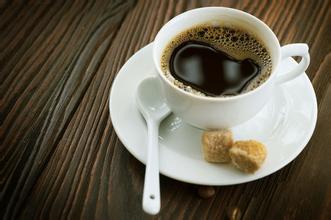Knowledge of espresso-the difference between lattes and American coffee
Italian coffee knowledge-the difference between latte and American coffee
There has long been a theory that roberstadt allows punching to produce better crema. This is true, because robersta contains only half the aroma components and aromatic oils of arabica coffee. This means that less oil is extracted into the coffee, thus reducing the impact of oil on foam stability. Therefore, increasing the robersta will reduce the overall amount of oil extracted from the coffee powder, which means that you have a higher probability of making a more stable and richer Crema.
Food technologists will also tell you that reducing the amount of oil makes coffee appear to make more body at first, and that the lack of oil makes it less like pure arabica coffee. Therefore, it is generally used to add 5%-10% robersta, which will not significantly affect the quality of coffee, but can ensure the stability of crema, however, this theory cannot explain the source of extra crema. Other articles explain that robersta may contain different sugars and thus cause this change.
I often collect espresso with its own crema, and one exception is Yellow Bourbon from a farm in Brazil, which is so sweet that if it's used to make espresso, even if it's baked nine days ago, it still produces a very rich, stable crema. Even when the liquid is drained and the foam on top dries, it remains stable.
There are many uncertainties affecting crema, including how coffee preserves carbon dioxide foam, how many types and amounts of fats are in coffee and how they are extracted into the cup.
Caffe Latte is the most familiar Italian coffee item in the world. It is a fancy coffee with equal proportion or even more milk added to the thick Espresso. With the warm seasoning of milk, the original sweet and bitter coffee becomes soft and sweet, sweet and rich, even those who are not used to drinking coffee, but also difficult to match the taste of latte. Like cappuccino, latte is good for morning drinking because it contains a lot of milk. Italians also like to warm their stomachs with it and eat it with breakfast. In Italian kitchens in the morning, coffee and milk are usually brewed simultaneously on a sunny stove. Latte drinkers prefer milk to espresso, and only Espresso can give plain milk its unforgettable flavor. [Italian latte] requires a small cup of Espresso and a glass of milk (150~200 ml), latte more milk and less coffee, which is very different from Cappuccino. Making iron coffee is extremely simple, just pour nearly boiling milk into the freshly made espresso. In fact, there are no fixed rules on how much milk is added, and it can be freely mixed according to personal taste. If you add some frothy cold milk to the hot milk, you get an American latte. Starbucks 'American latte is made in this way, with espresso at the bottom, milk heated to 65 - 75 degrees Celsius in the middle, and a layer of cold milk foam no more than half a centimeter at the end. If you don't warm the milk

Important Notice :
前街咖啡 FrontStreet Coffee has moved to new addredd:
FrontStreet Coffee Address: 315,Donghua East Road,GuangZhou
Tel:020 38364473
- Prev

Why are some coffee powders extracted quickly and some slowly?
Why some coffee powder extract quickly, some slow extraction rate: the ground coffee powder is not completely soluble in water, and the compounds that can really dissolve in water account for about 30%. In general coffee cooking, about 18% of the substances in coffee powder are dissolved in water, while the substances that can be dissolved in Espresso are about 15%, 25%, which is called extraction rate. If the extraction rate is low in a cup of coffee
- Next

Italian Coffee Grinding thickness scale-how to flatten the coffee powder
Italian Coffee Grinding thickness scale-how to flatten the coffee powder any coffee adjustment has its ups and downs! Because the Italian base (espresso) emphasizes rich, balanced, generous and fast! The essence of coffee is extracted in a short period of 20-30 seconds. In a very short time, we have to increase the extraction of coffee by grinding the fineness.
Related
- Beginners will see the "Coffee pull flower" guide!
- What is the difference between ice blog purified milk and ordinary milk coffee?
- Why is the Philippines the largest producer of crops in Liberia?
- For coffee extraction, should the fine powder be retained?
- How does extracted espresso fill pressed powder? How much strength does it take to press the powder?
- How to make jasmine cold extract coffee? Is the jasmine + latte good?
- Will this little toy really make the coffee taste better? How does Lily Drip affect coffee extraction?
- Will the action of slapping the filter cup also affect coffee extraction?
- What's the difference between powder-to-water ratio and powder-to-liquid ratio?
- What is the Ethiopian local species? What does it have to do with Heirloom native species?

